CONTACT US
Secretariat of UCLG-ASPAC Committee on the Belt and Road Local Cooperation
Floor 18, Building C, Civic Center, 18 East Jiefang Road, Jianggan District, Hangzhou
secretariat-brlc@hzfao.gov.cn
Zip code: 310026

"My parents also grow vegetables, but this place is so different from our farm!" Gazing at the rows of greenhouses in front of her, Mishina Olga from Kazakhstan widened her eyes in amazement. Holding a bag of freshly picked cucumbers, including varieties she had never seen before, she was amazed to see such a "magical" village in Hangzhou where enterprises create agricultural value in different ways.
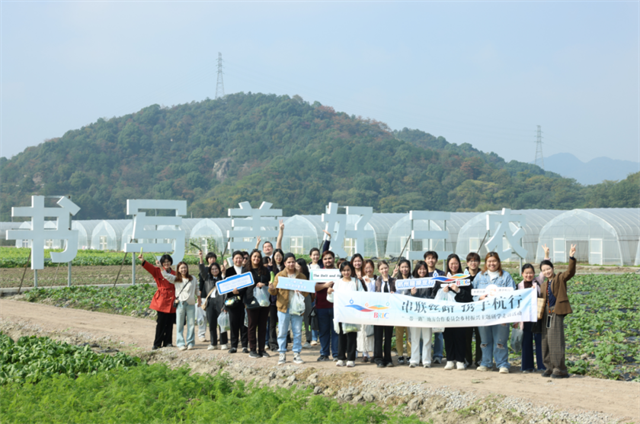
On Nov 11, the " The UCLG-ASPAC Committee on the Belt and Road Local Cooperation " (BRLC) hosted a rural revitalization themed study tour titled "From Hangzhou to the World" at "Xiejing'an Transfar Agricultural Innovation Village". The event invited over 30 representatives from business and public welfare sectors interested in rural revitalization, as well as international students from Zhejiang Gongshang University, to visit the plant science center, digital seedling factory, common prosperity greenhouses, and Transfar Rural Innovation Center in Xiejing'an Transfar Agricultural Innovation Village. They engaged in thematic sharing to understand how Zhejiang enterprises contribute to rural revitalization and exchanged innovative development models from villages around the world.
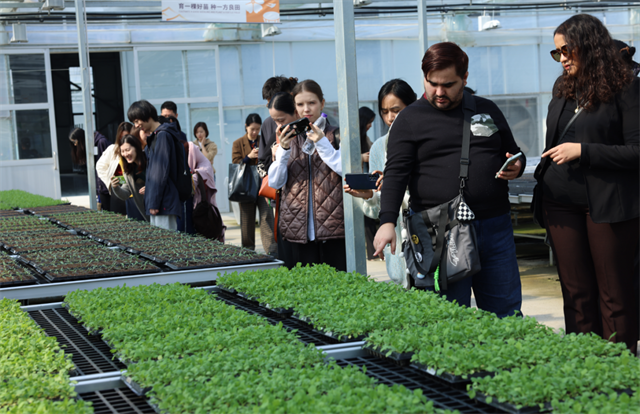
"What is rural revitalization?" For international students who have just arrived in China, this is a somewhat complex question. Yin Jiarong, BRLC secretariat explained, "To put it simply, rural revitalization can be understood as the sustainable development of rural areas. It's not just about economic revival but also ecological and social revitalization." During the visit, everyone saw different aspects of rural revitalization.
China's Rural Revitalization: A Trendy Global Concept
It takes only an hour's drive from West Lake to reach "Xiejing'an · Transfar Agricultural Innovation Village," which is composed of Jingyou village, Xiejia village, and Anshan village. Under the shade of green mountains and trees, farmlands, greenhouses, and laboratories are scattered across the land.
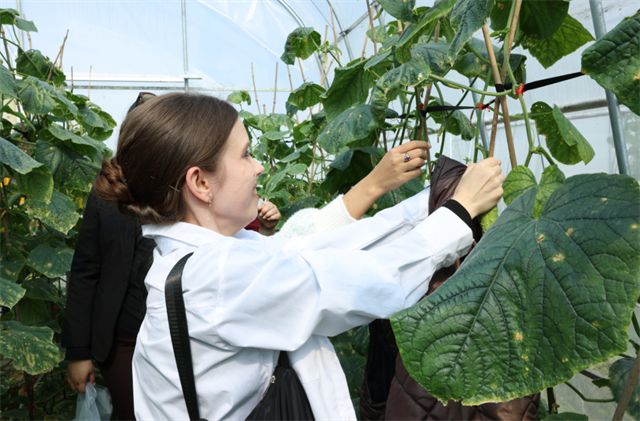
As a global industrial group, Transfar has been engaged in high-tech agriculture since 2000. "Xiejing'an Transfar Agricultural Innovation Village" is a pilot project where Transfar Group integrates "rural social enterprise" and "rural industry" to explore the path of rural revitalization in the suburbs of metropolitan areas. It has now become a model case for Zhejiang to deepen the "Thousand Village Demonstration and Ten Thousand Village Renovation Project" in the new era. By the end of October 2024, Xiejing'an Transfar Agricultural Innovation Village had directly driven an increase in farmers' income by 13.7 million yuan, directly provided employment for over 327 villagers, and benefited 14,800 local people through public welfare activities.
What left a deep impression on everyone during the visit was not only the combination of technology and agriculture but also the innovative governance model of the village. Across from the Plant Science Center, the greenhouses were labeled with the names of farmers, who are supported by "Transfar Common Prosperity Village," empowering villagers to generate their own income and achieve sustainable rural economic development.
Transfar Foundation participated in the planning from the beginning of the construction of "Xiejing'an Transfar Agricultural Innovation Village." Secretary-General Wang Fei introduced that the foundation introduced public welfare concepts, funds, and volunteer forces to support and cultivate village-level foundations with the "Transfar Common Prosperity Village" public welfare project. It carries out charitable public welfare undertakings around the incubation of rural public welfare communities, the excavation of rural culture, the protection of the ecological environment, the improvement of public services, and the training of rural talents, innovating the rural governance model.
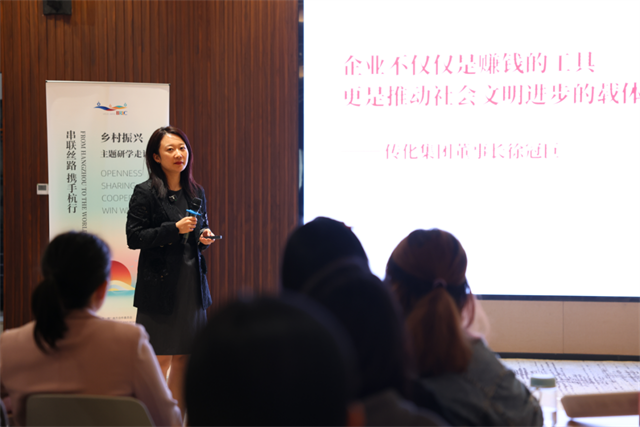
These practices of rural revitalization align with the United Nations Sustainable Development Goals (SDGs), which aim to improve welfare and promote sustainable agriculture. The "Transfar Worry-free Health Clinics" project of Transfar Foundation was also included in the "Global Poverty Reduction Case Series" best cases by seven international organizations, including the World Bank and the Food and Agriculture Organization of the United Nations.
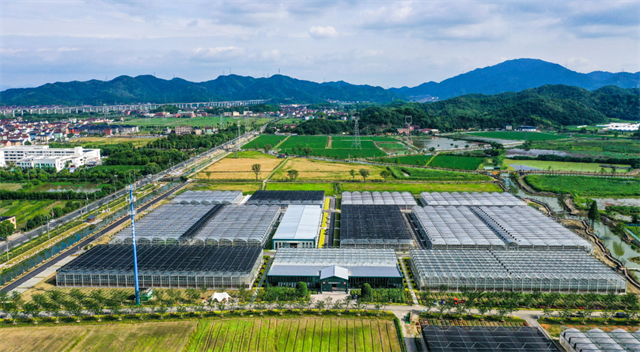
Global Rural Development Methods Align with Hangzhou's Case
What other excellent cases of rural revitalization are there in Hangzhou? How do Hangzhou merchants help rural sustainable development? What forms of rural innovation and development are there worldwide? The afternoon's rural revitalization theme exchange brought together cases from around the world.
Looking northwest from Xiejing'an Transfar Agricultural Innovation Center, not far away is the location of another rural innovation and development case, "EcoZhejiang Nature Conservation," which was highly praised at the United Nations Convention on Biological Diversity (COP16) held not long ago. Hu Chongxiao, Senior Trust Manager of Wanxiang Trust, introduced: "Jianghe Hui Zhejiang Cui integrates ecological protection, scientific research, science popularization, and natural education. It not only experiments and restores biodiversity but also allows the public to participate and understand the significance of ecological restoration."
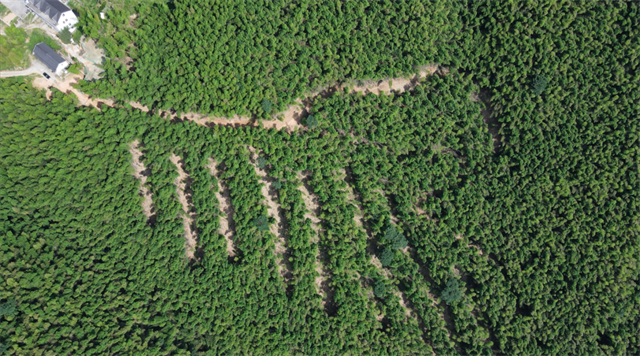
Lennon Wee Song Ren from Malaysia and his classmates also shared cases of biodiversity protection. Due to socio-economic development, the living environment of Malaysia's national treasures, such as the Malayan tapir and orangutan, has been damaged. Organizations like the Borneo Conservation Trust Fund and animal habitat communities have restored forest and river natural environments, employing locals in the project, making it a project that balances biodiversity protection and increasing farmers' income.
In the integration of industry and rural development, The Deputy Secretary-General of The Commonwealth Foundation of CHINT, Zhang Lihua introduced CHINT's "photovoltaic +" projects that combine various types such as sand light, fish light, herd light, forest light, and agricultural light. After participating in the construction of one of the world's largest solar projects, the Benban Solar Park in Egypt, CHINT is now printed on local currency, becoming Egypt's "national business card."

In terms of combining Hangzhou merchants' advantages with rural characteristics, the practices of Holley Group in Jingshan village, Hangzhou, and Liucun village, Dayang Town, Jiande City, are also representative cases. Holley Group Party Committee Office Director Li Xiaoxia described the process of combining enterprise funds, industrial assistance, technology, and talent introduction with rural development organically.
Adapting to local conditions to help rural development is a common feature of many excellent cases. Osmara Janeth and Jorge Arturo from Mexico introduced cases of establishing fruit and vegetable production bases in volcanic rock-rich areas in Mexico and helping coffee-producing villages to create local brand development.
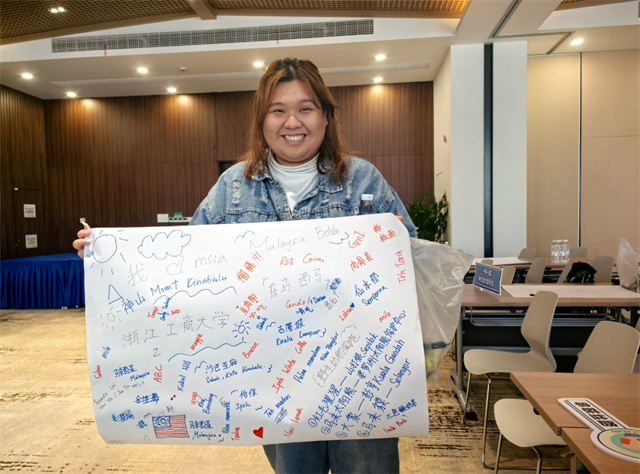
"Bringing together cases, insights, and actions from around the world for exchange is itself a manifestation of international exchange," said Yin Jiarong, BRLC secretariat, after the event. The BRLC, co-initiated by the Hangzhou Municipal People's Government and the Chinese People's Association for Friendship with Foreign Countries within the Asia-Pacific framework of the "United Cities and Local Governments" organization, continues to promote various training, seminars, forums, and study tours, becoming a platform for communication and exchange around the world.
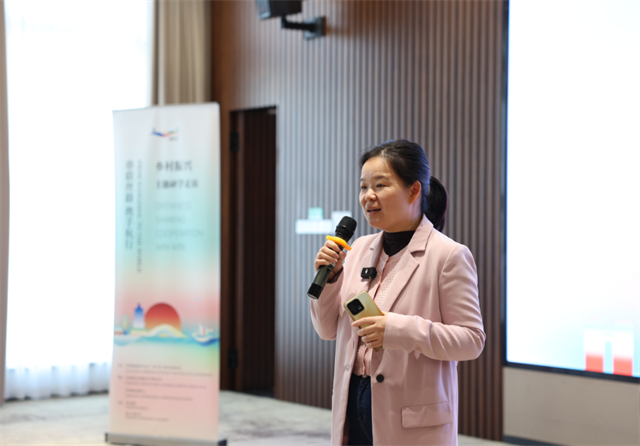
"From Hangzhou to the World" themed exchange activities will continue to be held, promoting more forms and content of exchange activities in addition to rural revitalization and enterprise going global, to deepen the connection between Hangzhou and the world.


"My parents also grow vegetables, but this place is so different from our farm!" Gazing at the rows of greenhouses in front of her, Mishina Olga from Kazakhstan widened her eyes in amazement. Holding a bag of freshly picked cucumbers, including varieties she had never seen before, she was amazed to see such a "magical" village in Hangzhou where enterprises create agricultural value in different ways.

On Nov 11, the " The UCLG-ASPAC Committee on the Belt and Road Local Cooperation " (BRLC) hosted a rural revitalization themed study tour titled "From Hangzhou to the World" at "Xiejing'an Transfar Agricultural Innovation Village". The event invited over 30 representatives from business and public welfare sectors interested in rural revitalization, as well as international students from Zhejiang Gongshang University, to visit the plant science center, digital seedling factory, common prosperity greenhouses, and Transfar Rural Innovation Center in Xiejing'an Transfar Agricultural Innovation Village. They engaged in thematic sharing to understand how Zhejiang enterprises contribute to rural revitalization and exchanged innovative development models from villages around the world.

"What is rural revitalization?" For international students who have just arrived in China, this is a somewhat complex question. Yin Jiarong, BRLC secretariat explained, "To put it simply, rural revitalization can be understood as the sustainable development of rural areas. It's not just about economic revival but also ecological and social revitalization." During the visit, everyone saw different aspects of rural revitalization.
China's Rural Revitalization: A Trendy Global Concept
It takes only an hour's drive from West Lake to reach "Xiejing'an · Transfar Agricultural Innovation Village," which is composed of Jingyou village, Xiejia village, and Anshan village. Under the shade of green mountains and trees, farmlands, greenhouses, and laboratories are scattered across the land.

As a global industrial group, Transfar has been engaged in high-tech agriculture since 2000. "Xiejing'an Transfar Agricultural Innovation Village" is a pilot project where Transfar Group integrates "rural social enterprise" and "rural industry" to explore the path of rural revitalization in the suburbs of metropolitan areas. It has now become a model case for Zhejiang to deepen the "Thousand Village Demonstration and Ten Thousand Village Renovation Project" in the new era. By the end of October 2024, Xiejing'an Transfar Agricultural Innovation Village had directly driven an increase in farmers' income by 13.7 million yuan, directly provided employment for over 327 villagers, and benefited 14,800 local people through public welfare activities.
What left a deep impression on everyone during the visit was not only the combination of technology and agriculture but also the innovative governance model of the village. Across from the Plant Science Center, the greenhouses were labeled with the names of farmers, who are supported by "Transfar Common Prosperity Village," empowering villagers to generate their own income and achieve sustainable rural economic development.
Transfar Foundation participated in the planning from the beginning of the construction of "Xiejing'an Transfar Agricultural Innovation Village." Secretary-General Wang Fei introduced that the foundation introduced public welfare concepts, funds, and volunteer forces to support and cultivate village-level foundations with the "Transfar Common Prosperity Village" public welfare project. It carries out charitable public welfare undertakings around the incubation of rural public welfare communities, the excavation of rural culture, the protection of the ecological environment, the improvement of public services, and the training of rural talents, innovating the rural governance model.

These practices of rural revitalization align with the United Nations Sustainable Development Goals (SDGs), which aim to improve welfare and promote sustainable agriculture. The "Transfar Worry-free Health Clinics" project of Transfar Foundation was also included in the "Global Poverty Reduction Case Series" best cases by seven international organizations, including the World Bank and the Food and Agriculture Organization of the United Nations.

Global Rural Development Methods Align with Hangzhou's Case
What other excellent cases of rural revitalization are there in Hangzhou? How do Hangzhou merchants help rural sustainable development? What forms of rural innovation and development are there worldwide? The afternoon's rural revitalization theme exchange brought together cases from around the world.
Looking northwest from Xiejing'an Transfar Agricultural Innovation Center, not far away is the location of another rural innovation and development case, "EcoZhejiang Nature Conservation," which was highly praised at the United Nations Convention on Biological Diversity (COP16) held not long ago. Hu Chongxiao, Senior Trust Manager of Wanxiang Trust, introduced: "Jianghe Hui Zhejiang Cui integrates ecological protection, scientific research, science popularization, and natural education. It not only experiments and restores biodiversity but also allows the public to participate and understand the significance of ecological restoration."

Lennon Wee Song Ren from Malaysia and his classmates also shared cases of biodiversity protection. Due to socio-economic development, the living environment of Malaysia's national treasures, such as the Malayan tapir and orangutan, has been damaged. Organizations like the Borneo Conservation Trust Fund and animal habitat communities have restored forest and river natural environments, employing locals in the project, making it a project that balances biodiversity protection and increasing farmers' income.
In the integration of industry and rural development, The Deputy Secretary-General of The Commonwealth Foundation of CHINT, Zhang Lihua introduced CHINT's "photovoltaic +" projects that combine various types such as sand light, fish light, herd light, forest light, and agricultural light. After participating in the construction of one of the world's largest solar projects, the Benban Solar Park in Egypt, CHINT is now printed on local currency, becoming Egypt's "national business card."

In terms of combining Hangzhou merchants' advantages with rural characteristics, the practices of Holley Group in Jingshan village, Hangzhou, and Liucun village, Dayang Town, Jiande City, are also representative cases. Holley Group Party Committee Office Director Li Xiaoxia described the process of combining enterprise funds, industrial assistance, technology, and talent introduction with rural development organically.
Adapting to local conditions to help rural development is a common feature of many excellent cases. Osmara Janeth and Jorge Arturo from Mexico introduced cases of establishing fruit and vegetable production bases in volcanic rock-rich areas in Mexico and helping coffee-producing villages to create local brand development.

"Bringing together cases, insights, and actions from around the world for exchange is itself a manifestation of international exchange," said Yin Jiarong, BRLC secretariat, after the event. The BRLC, co-initiated by the Hangzhou Municipal People's Government and the Chinese People's Association for Friendship with Foreign Countries within the Asia-Pacific framework of the "United Cities and Local Governments" organization, continues to promote various training, seminars, forums, and study tours, becoming a platform for communication and exchange around the world.

"From Hangzhou to the World" themed exchange activities will continue to be held, promoting more forms and content of exchange activities in addition to rural revitalization and enterprise going global, to deepen the connection between Hangzhou and the world.